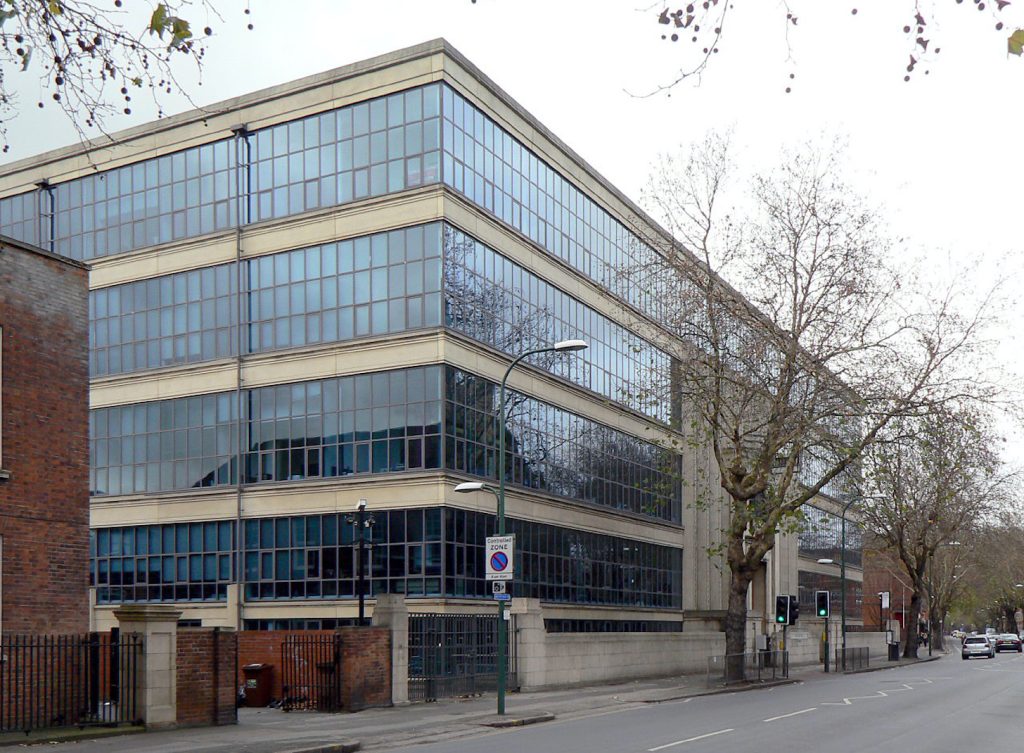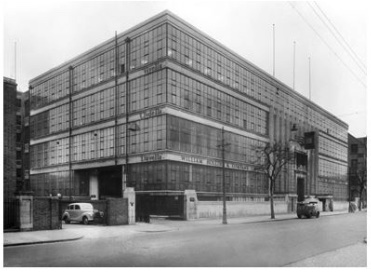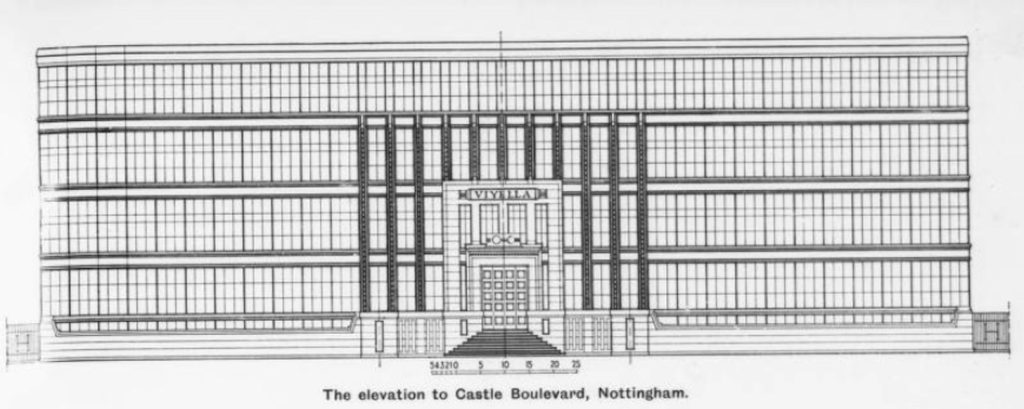Now called New Castle House, this building is one of Nottingham’s modern architectural marvels.
There’s another chance to join me for my Deco in the Details walks this October. Two complementary tours explore the architecture of the 1920s and 1930s in Nottingham, these walks examine the influence of Art Deco on the city’s buildings, as well as the expansion and modernisation of the Interwar period.
Deco in the Details Part 1, Thursday 23 October, 11 am
Deco in the Details Part 2, Thursday 30 October, 11 am
Each tour takes approximately 2 hours and tickets are £20 each.
Here’s a little more about one of the finest buildings to feature on Part 1, New Castle House, on Castle Boulevard, which was built as Viyella House, completed in 1933.
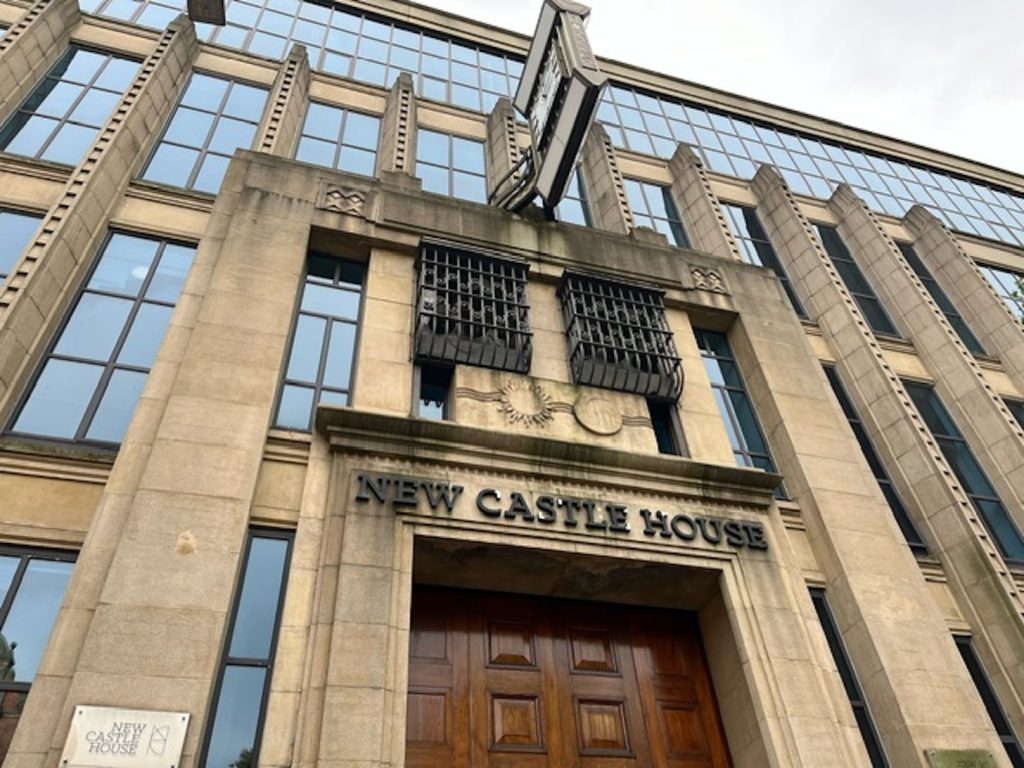
William Hollins & Co. with their trademarked Merino wool and cotton thread, Viyella (named for their original factory at Via Gellia in Derbyshire), expanded one of their Nottingham factories to become the company’s head office. Between 1931-1933, the new building by local architect Frank A. Broadhead was constructed on Castle Boulevard.
Frank Broadhead (1887-1967) had an office on Friar Lane, 2 Castle Place, and is also known to have designed houses in Wollaton. He was later in partnership with Eric Vernon Royle, who during the 1930s-1950s was diocesan architect working on churches including St John the Baptist in Carlton and St Martha the Housewife, Broxtowe. Incidentally, Broadhead’s home address, at least in the 1940s, was Holly Lodge, The Park Estate.
Viyella House is the only building I’ve been able to find in Broadhead’s name alone. The modern reinforced concrete construction of Viyella House was devised by (Sir) Owen Williams, who went on to design the famous D10 & D6 factory buildings for Boots at Beeston and the Daily Express Building in Manchester. The mushroom-headed concrete columns carry the load of the thin slab floors, allowing the Viyella building to support the weight of machinery inside.
The Architectural Review, September 1933 (which also included a feature on The Midland Hotel, Morecambe) published the plans for Viyella House and stated: “The new building comprises basement, mezzanine, ground and three other floors and is constructed in reinforced concrete of the flat beam mushroom column type. The internal horizontal bands, pilasters and the structure of the main entrance are in artificial stone. The horizontal curtain of windows contains 24,500 feet of glass.”
The article goes on to describe the interiors of the boardroom and hall, which were panelled in teak with furniture and rugs designed by Betty Joel.
Betty Joel (the professional name of Mary Stewart Lockhart) was an interior and furniture designer active in the 1920s and 1930s, and you can read more about her here on the Women Who Meant Business blog. My thanks also to Paul Evans, who shared some info on Betty Joel and her work with me.
Photos of the showroom were included in the Architecture Review article. Recently, another appeared in Dezeen as part of a feature about Art Deco designers, which included Betty Joel.
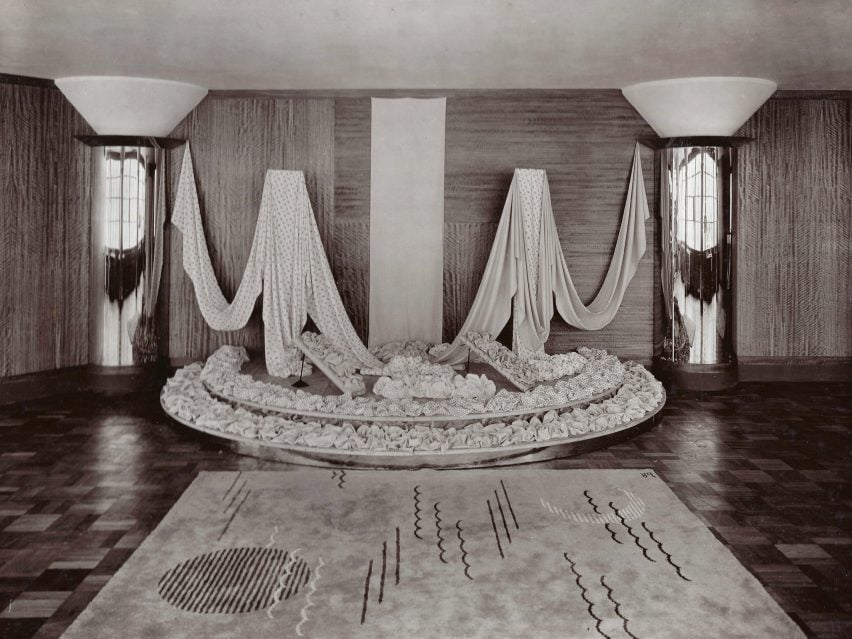
The concrete mushroom columns were covered in stainless steel and their tops turned into lighting features. Joel also designed the rugs.
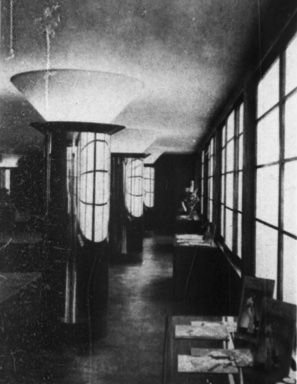
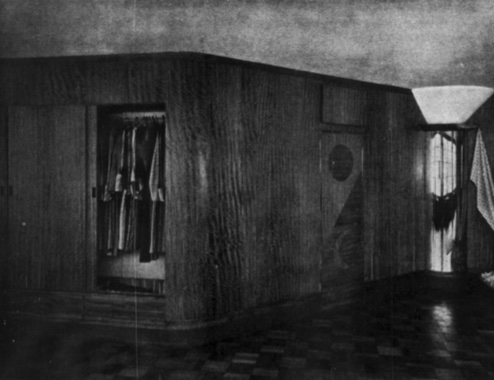
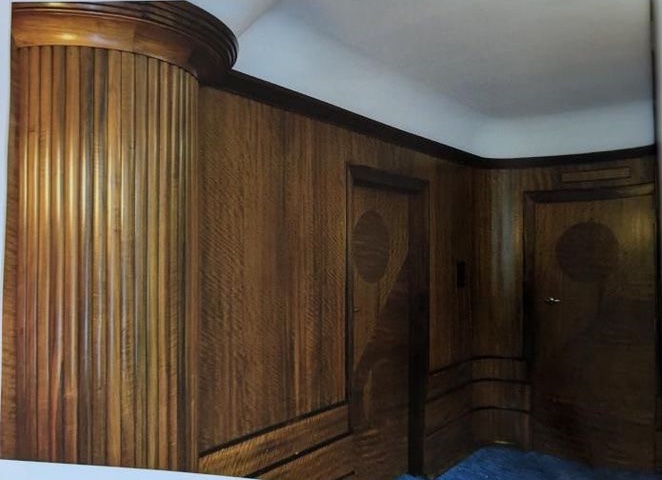
The pattern on the doors is a reworking of the Viyella Day & Night logo as seen on the front of the building.
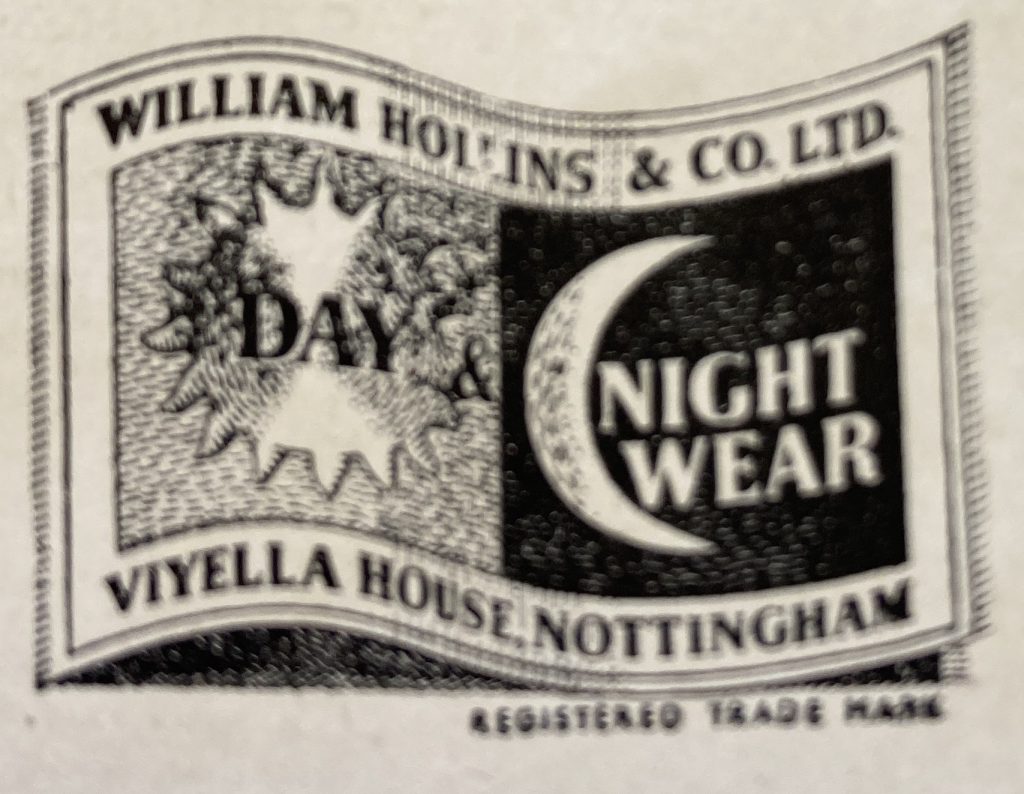
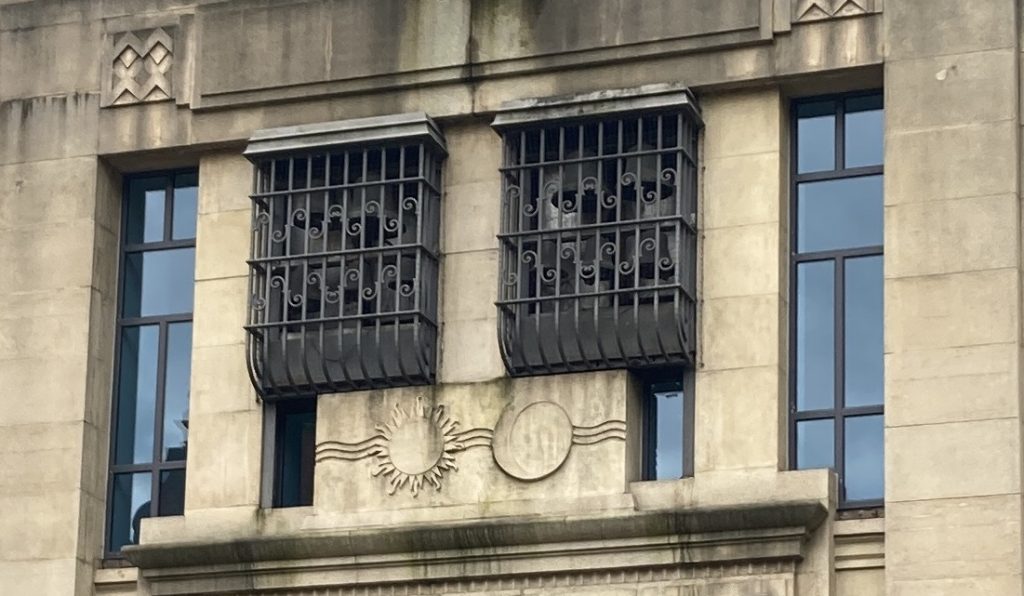
William Hollins & Co. left the building in 1961.
Thanks to Richard Thorpe for contacting me to tell me about working for James McArtney Architects in the 1980s when the building was listed and restored. The large manufacturing floors provided flexible office space for Bass who had taken over the building, and the interiors were brought up to date while “retaining the Art Deco theme”.
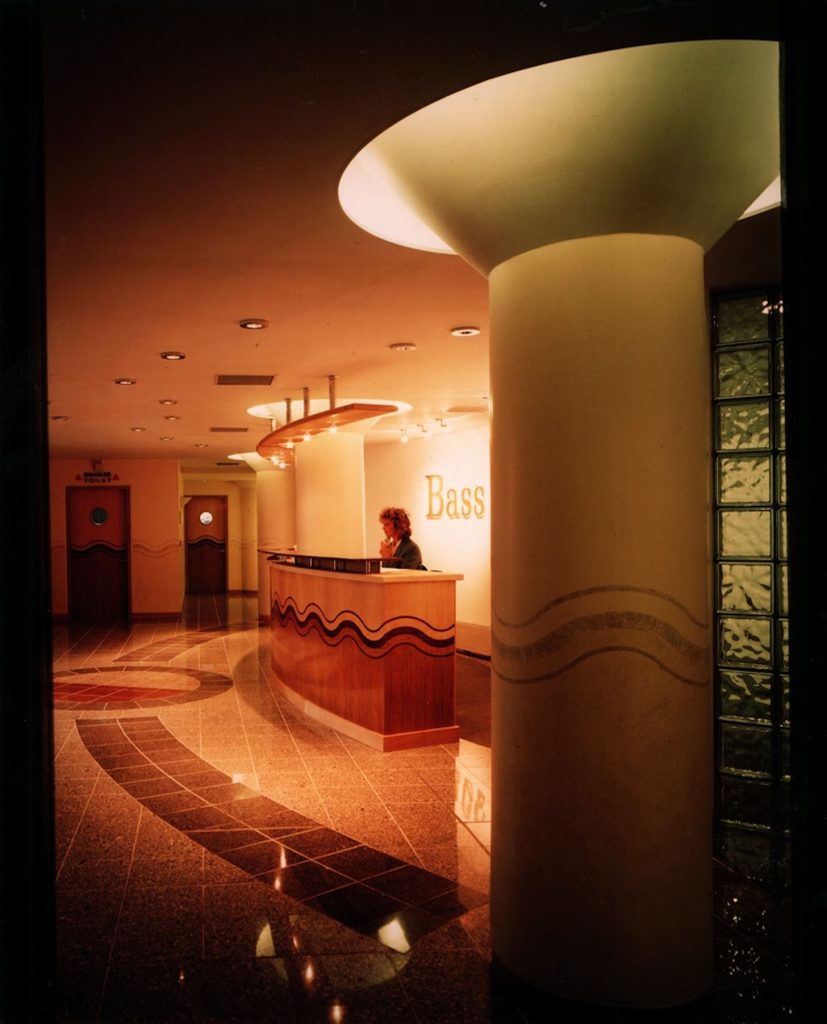
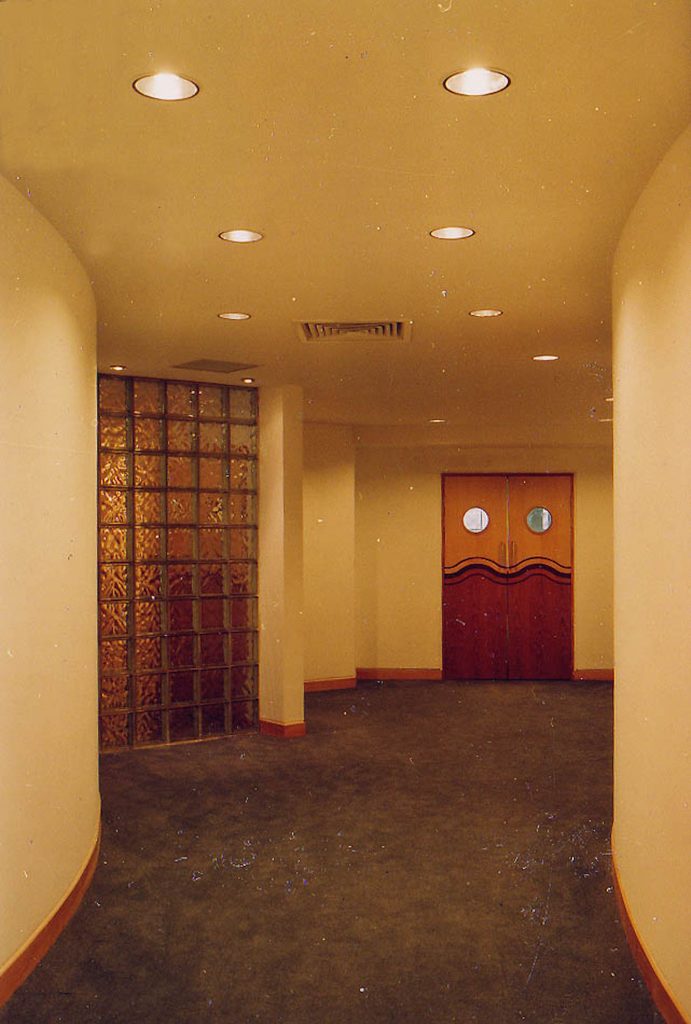
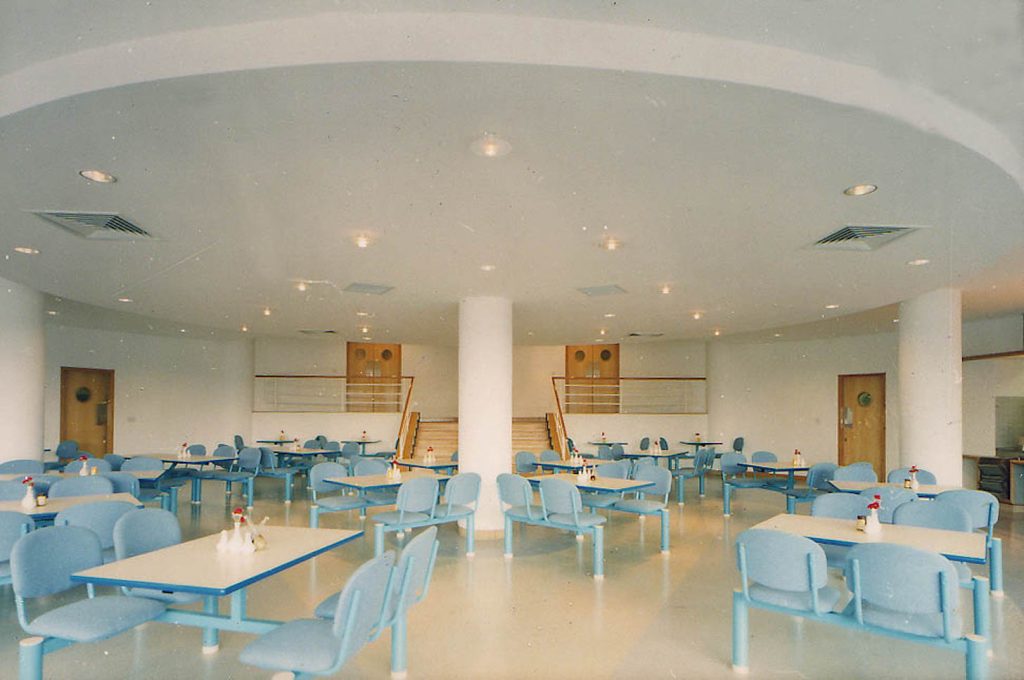
If you want to find out more about Nottingham’s architecture and look for Deco in the Details, please join me for Deco in the Details Part 1 on Thursday 23 October, 11 am.
Thanks for reading Watson Fothergill Walk – Lucy Brouwer! Subscribe for free to receive new posts and support my work.

